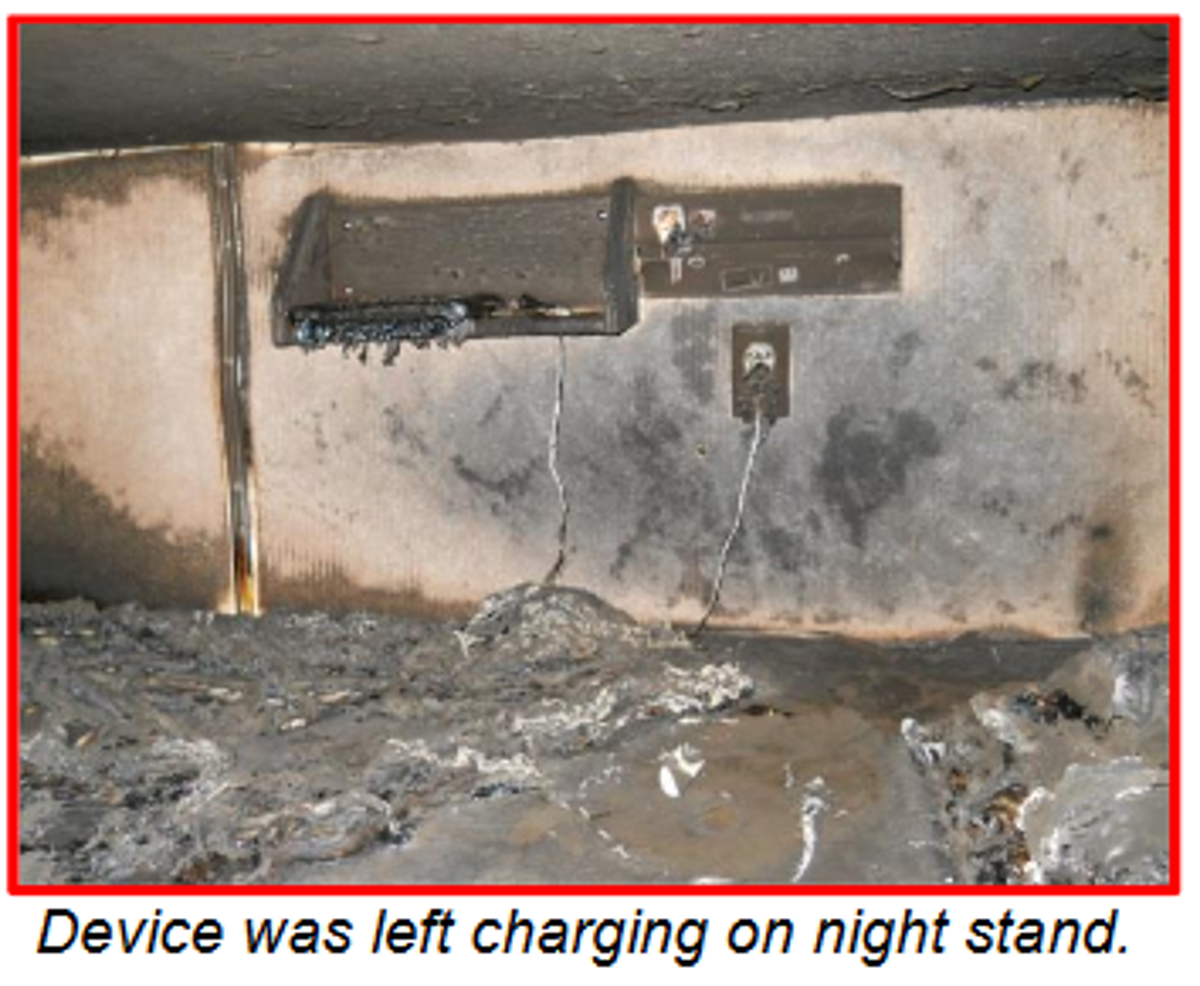Fires caused by electronic device chargers
- Safety Flash
- Published on 21 December 2018
- Generated on 6 December 2025
- IMCA SF 29/18
- 3 minute read
Jump to:
The United States Bureau of Safety & Environmental Enforcement (BSEE) has published Safety Alert 337 on fires relating to the charging of personal electronic devices.
What happened?
IMCA has dealt with this before, most recently in Safety Flash 18/18.
BSEE has related several similar incidents:
March 2016: A drillship’s fire alarm sounded due to a fire reported in the living quarters. Crews mustered at their primary muster stations and fire teams were deployed to extinguish the fire. The initial response with fire extinguishers did not smother the fire, so a fire hose was required to completely extinguish the fire. Although the source of the fire was classified as ‘undetermined’, findings suggested a wall mounted fluorescent light for marine use with receptacle, a universal adapter plugged into the light fixture, a phone charger plugged into the adapter, and/or a tablet left under the bunk pillow may have started the fire. Damage as a result of the fire was estimated at $50,000.
March 2018: A fire occurred in temporary living quarters after a contractor left a cell phone charging on his mattress while at work for the day. The charger wire apparently failed, creating enough heat to ignite the bed sheet and mattress . The fire team responded to the area and quickly extinguished the flames. No personnel were present at the time of the fire, and no injuries resulted from the incident.

May 2018: Black soot was noticed above the entry door of rented living quarters. After power was isolated, personnel entered the building and found heat damage to the ceiling and lights, as well as multiple charred mattresses. A possible cause of the fire was a tablet being charged on a bottom bunk hanging night stand. The tablet and electrical receptacle were badly charred.

No personnel were present at the time of the fires, and no injuries resulted from these incidents.
Therefore, BSEE recommends:
- Charger cords for all electronic devices should be in good working condition (with no exposed wiring) prior to being brought offshore.
- Charging devices should not be left on surfaces that are potentially flammable or that can promote heat build-up.
- Avoid leaving charging cables or portable electronic devices on bedding.
- Do not leave unattended devices connected to outlets found on lights in bunks.
- Remove electronic devices from chargers and outlets once fully charged.
- Include information about the hazards of charging portable devices during orientations and post relevant signage in living quarters.
IMCA Safety Flashes summarise key safety matters and incidents, allowing lessons to be more easily learnt for the benefit of the entire offshore industry.
The effectiveness of the IMCA Safety Flash system depends on the industry sharing information and so avoiding repeat incidents. Incidents are classified according to IOGP's Life Saving Rules.
All information is anonymised or sanitised, as appropriate, and warnings for graphic content included where possible.
IMCA makes every effort to ensure both the accuracy and reliability of the information shared, but is not be liable for any guidance and/or recommendation and/or statement herein contained.
The information contained in this document does not fulfil or replace any individual's or Member's legal, regulatory or other duties or obligations in respect of their operations. Individuals and Members remain solely responsible for the safe, lawful and proper conduct of their operations.
Share your safety incidents with IMCA online. Sign-up to receive Safety Flashes straight to your email.